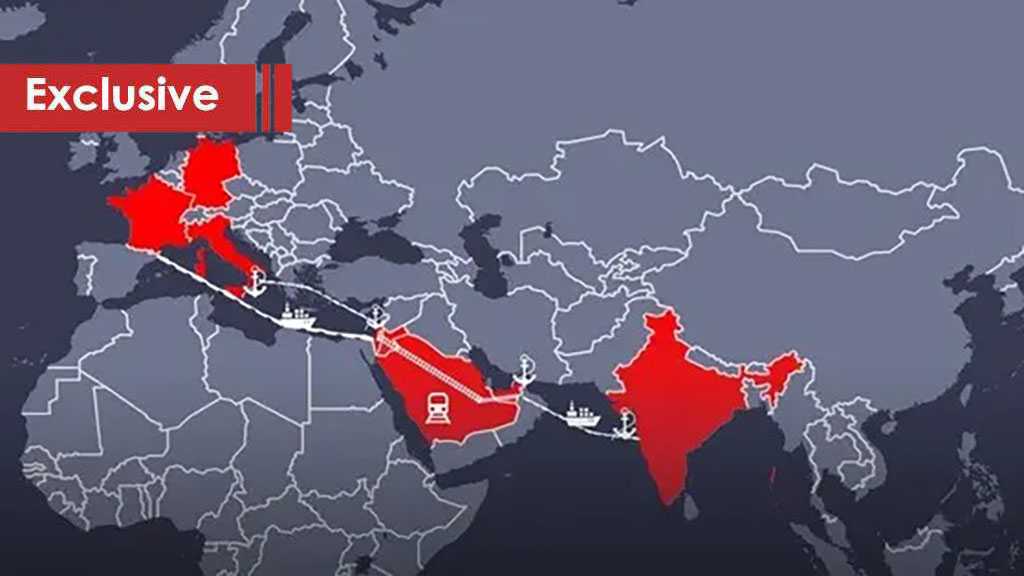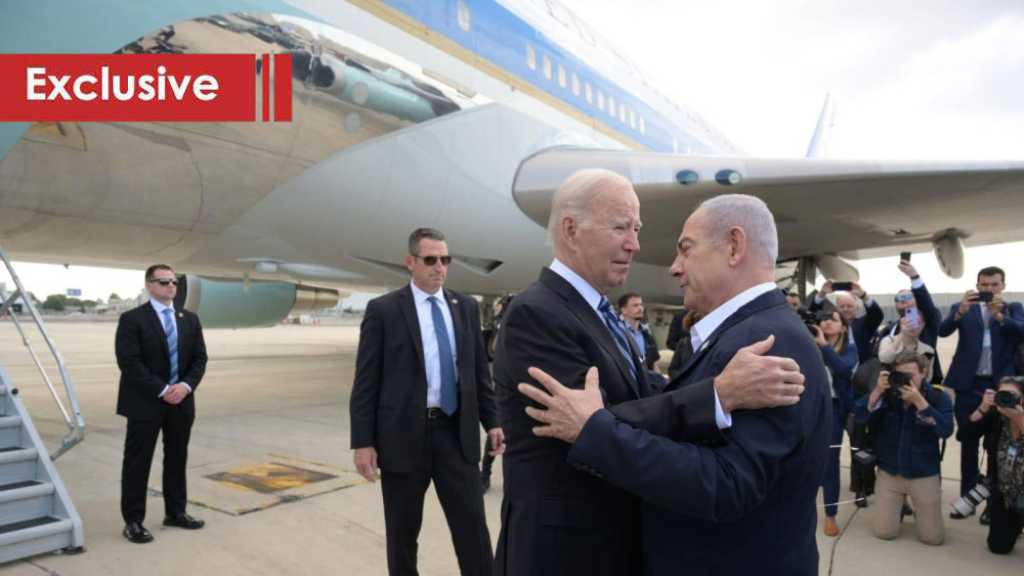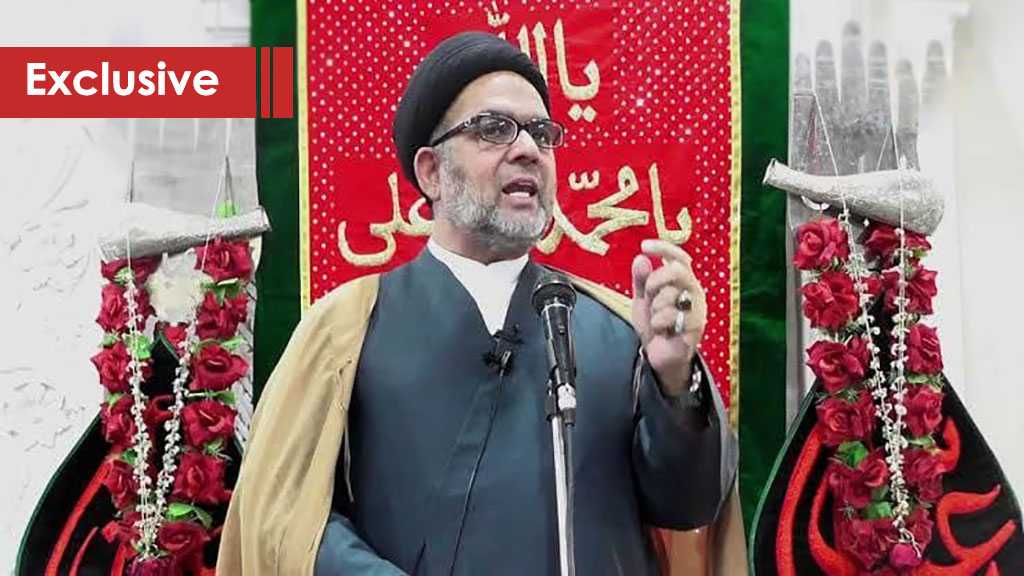
What’s the True Potential of The India-Middle East-Europe Corridor?

By Darko Lazar
One of the biggest announcements to come out of the G20 summit in New Delhi was the launch of an ambitious plan to build an economic corridor linking Europe with the Middle East and India via rail and sea.
A 325-word Memorandum of Understanding inked by India, Saudi Arabia, the United Arab Emirates, Germany, France, Italy, the European Union and the United States, outlines how this newly envisaged network would help boost trade, deliver energy resources and improve digital connectivity.
The so-called India-Middle East-Europe Economic Corridor, or IMEC, comprises two separate routes – an east corridor linking India to the Gulf monarchies and a northern corridor connecting the Arab states to Europe.
“Israel” is not a signatory but is mentioned in the MoU as one of the transit points for goods and services moving through the ship-to-rail network.
For “Israeli” Prime Minister Benjamin Netanyahu, who has been desperately trying to normalize ties with Saudi Arabia, it didn’t matter whether Tel Aviv is a signatory or not. He jumped on the news coming out of New Delhi and declared that “Israel” was “a central junction in this economic corridor”, which would “change the face of the Middle East.”
Netanyahu isn’t the only one hyping up the project. Some in the mainstream media have already dubbed it a “game-changer”, and the White House claims the corridor is ushering in a “new era of connectivity.” But is the planned trade route any of those things?
There is no alternative to the alternative
The unveiling of IMEC was almost immediately characterized as a challenge to China’s Belt and Road Initiative [BRI].
The latter is the world’s largest infrastructure project that seeks to connect Asia with Africa and Europe via land and maritime networks with the aim of advancing integration, increasing trade and stimulating economic growth.
Naturally, this massive Chinese foreign policy undertaking is perceived as a major threat to US hegemony. Washington responded by peddling the narrative that the BRI is a debt trap as it leaned on ‘allies’ to abandon the Chinese program while trying to improve its own competitiveness on the global stage.
IMEC is supposed to be part of the Biden administration’s alternative to the BRI. It’s true that both initiatives share many of the same objectives and methods of implementation. In theory, at least, both are designed to connect manufacturers in Asia with consumers in the West, while implementing infrastructure projects along the corridors.
But the BRI has already lived up to the hype and will make for tough competition. The Chinese have invested around $1 trillion into the scheme that now extends across 150 countries, including IMEC signatories, Saudi Arabia and the UAE. And unlike “Israel”, these two countries are the actual “central junction” in the new economic corridor.
Here, it’s important to note that China is already Saudi Arabia’s largest trading partner and the biggest investor in the Kingdom's economy.
Speculation about the Americans trying to rip India out of BRICS, while working to help New Delhi replace the Chinese as Riyadh's key trading partner may very well be accurate. But these are unrealistic objectives.
The Chinese are investing billions into the Saudi economy while New Delhi is looking for cash injections from Riyadh. According to modest projections, the Saudis will cough up around $100 billion for India’s economy in the coming years while the current turnover of more than $50 billion is also the result of Riyadh’s investments in this partnership.
Furthermore, the West’s failure to ‘Ukrainize’ the G20 summit in New Delhi is just another reminder that India has no interest in abandoning its role in the expanding BRICS bloc. Instead, both India and Saudi Arabia, along with the rest of the Global South, have embraced multipolarity and are exploring numerous multilateral frameworks for advancing their national interests.
As such, China’s BRI and the billions it pumps into the Saudi economy will undoubtedly remain a priority for Riyadh. As the Saudis and Emiratis forge ahead with the diversification of their economic relations, including the expansion of ties with Iran, they are likely to seek the integration of the BRI and IMEC into a single global artery of logistics. This integration with existing networks is perhaps the only logical step for realizing IMEC’s true potential.
The main speedbump is the US, which wants to use the initiative as a political tool against China and Russia and grow its influence in the countries along the corridor rather than focus on mutual economic development.
Still No Framework for Normalization
With numerous transportation and logistics projects springing up across the Eurasia region, Gulf states haven’t failed to realize their infrastructure potential. The member states of the Gulf Cooperation Council are mapping out their own sea and land freight routes, which led to the revival of the massive Gulf Railway project.
The railway system, which is expected to be completed by 2025 and cost around $250 billion, will link all six GCC members. Presumably, this is the same railway system that “Israel” wants to plug in to guarantee its place in IMEC and normalize ties with Saudi Arabia.
In July, Netanyahu announced plans for the construction of a $27 billion rail expansion that could provide overland links to Saudi Arabia in the future. But the Saudis still haven’t responded to that announcement.
That same month, Biden himself said that “Israel” and Saudi Arabia were a long way from a normalization agreement. Meanwhile, his national security advisor, Jake Sullivan, admitted on the way to the G20 summit in India that there is still no actual framework for normalization.
When asked whether IMEC was part of normalization efforts between Riyadh and Tel Aviv, the State Department’s Matthew Miller said, “No, it is separate.”
It probably doesn't help that the Biden administration has a tumultuous relationship with both the Netanyahu government and Saudi Crown Prince Mohammad Bin Salman.
Some of the elements for normalization are undoubtedly on the table. However, nothing has been finalized.
Of course, it makes far more sense for the Gulf Railway project to be directed towards Syria and Lebanon, which are perfectly positioned for the role of a bridge in any future India-Europe economic corridor.



